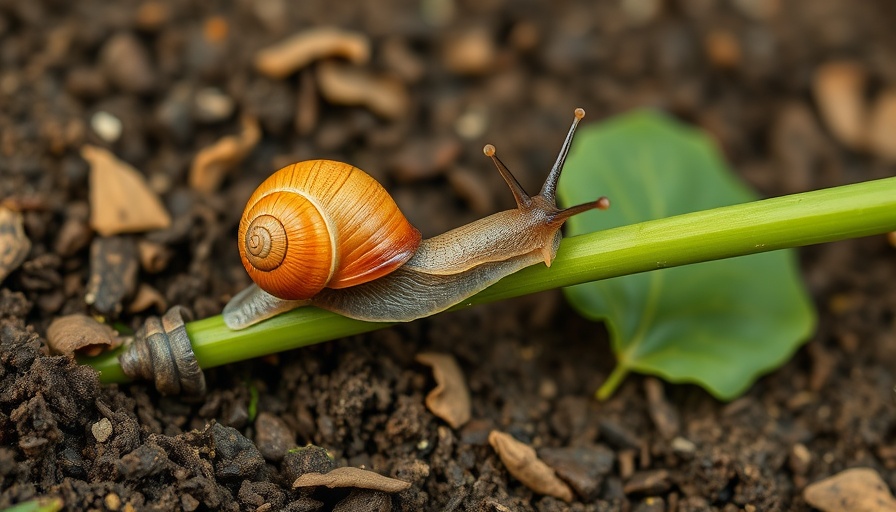
Understanding the Garden Invaders: Slugs and Snails
As the seasons shift and April showers give way to blooming flowers, gardeners often find themselves contending with an all-too-familiar menace: slugs and snails. These slimy mollusks, often considered the raiders of the night, have an insatiable appetite for your cherished plants. From vibrant flowers to tender herb shoots, nothing seems to escape their relentless munching. Thus, understanding these creatures is crucial for effective garden management.
Slugs and snails belong to the gastropod family, recognizable by their slimy trails — a sure sign of their nocturnal escapades. Distressed gardeners often find significant portions of their foliage nibbled down to stubs after a single night. They thrive in damp, cool environments, making spring and early summer their prime time for population booms. Depending on the climate, these pests might hibernate during frigid conditions or become active year-round in milder locales.
Creating a Hostile Environment for Slugs and Snails
The first line of defense in your battle against slugs and snails involves disrupting their natural habitat. Clearing away debris, moving pots, and maintaining tidy garden borders can significantly reduce their hiding spots. Although it may seem like a chore to maintain order in your garden’s aesthetic, doing so can greatly cut down on pest numbers.
Effective Strategies for Pest Control
Employing a variety of strategies can yield the best results when dealing with slugs and snails. Handpicking is a straightforward yet effective method, especially in the early morning or late evening. Keep a bucket of soapy water nearby to deposit the caught pests as you collect them. While somewhat tedious, this hands-on approach can effectively minimize their immediate presence.
Additionally, bait and trap systems can attract these unwanted guests away from your plants. Safe options include using beer traps, which exploit their attraction to fermentation. Simply bury a container in the soil and let the slugs enjoy a drink, drowning themselves in the process. Remember, using eco-friendly baits is crucial to ensure that you do not harm beneficial garden critters.
Building Physical Barriers
Another highly effective method for protecting your garden from slugs is implementing physical barriers. Copper tape around the edges of raised beds can deter these creatures as they attempt to cross. The electrical impulse generated upon contact naturally repulses them. Alternatively, coarse materials such as crushed eggshells or diatomaceous earth can create an unwelcoming environment, as slugs dislike moving across sharp surfaces.
Nature's Own Defenders: Encouraging Predators
Incorporating natural predators can also play a substantial role in your slug and snail management plan. Birds, frogs, and certain insects like ground beetles feast on these pests. By making your garden a welcoming place for wildlife, you encourage a healthy ecosystem. Consider adding bird baths, native plants, and other wildlife-friendly features to draw in these natural pest controllers.
Complementary Practices for a Thriving Garden
While slug and snail control is critical, adopting an integrated approach to garden care is equally essential. Employing organic gardening practices such as using compost and mulching can strengthen plant health, making them more resilient against pests. Moreover, growing companion plants like garlic and chives can help repel slugs naturally, creating a harmonious garden ecosystem.
Embrace Sustainable Gardening
By being proactive with your slug and snail management strategies, you not only protect your garden but also embody sustainable gardening practices. With every ruined leaf and flower you discover, remember that embracing a holistic approach emphasizes balance in your outdoor space. Whether you're handpicking, implementing barriers, or inviting in helpful wildlife, every little action contributes to the overall health of your garden.
In conclusion, while slugs and snails may be persistent foes, equipping yourself with knowledge and effective tactics will transform your garden into a flourishing paradise. Discover the countless joys of gardening by ensuring these nuisances don’t ruin your hard work!
Let's take the joy of gardening back by implementing these strategies today!
 Add Row
Add Row  Add
Add 




Write A Comment